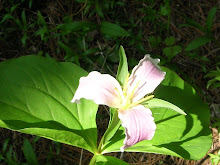OK...You've been more than patient. Here it is!
Citrus limon
Lemon
Taxonomy
Kingdom: Plantae—A plant
Subkingdom: Tracheobionta—Vascular
Superdivision: Spermatophyta—with Seeds
Division: Magnoliophyta—It flowers
Class: Magnoliopsida—It has dicotyledonic embroyic leaves (two of them)
Subclass: Rosidae—a huge subclass of plants. Usually having separated petals
Order: Sapindales—usually woody with lobed leaves
Family: Ruteceae—part of the Rue family. Citrus is the most important member of the Ruteceae family that also included, naturally, Rue! The highly scented herb we all know and love. This family usually has leaves with glands on them that create the lovely scents given off by these plants. Ruteceae plants are flowering plants, which we already knew because of the Division citrus falls into—Magnoliophyta. The flowers usually have four to five separate petals. Those petals usually also have some nice smelly glands on them too which make the flowers smell so sweet. Lemon flower, orange flowers, and even rue all smells great. These flowers also tend to have more than one stamen, sometimes up to 8 or more and they are usually bisexual so they can just pollinate themselves.
Genus: Citrus—the citrus part!
Species: Citrus limon (L.)—specifically, a lemon
Description and Cultivation:
Citrus limon or Lemon comes from a relatively small tree that tend to be 10-20 feet tall at most and about 5 feet or so wide. The tree has grayish-brown bark . The branches lead to leaf stalks and the fruit, at the base of each leaf a small, but nasty little spine lurks ready to stab the unsuspecting lemon picker. Its leaves light green and are evergreen and are waxy in appearance. They are oval and have serrated edges. The leaves end in an axial and hold the five-petal, scent-filled flower that is mainly white but fades to pink and purple at the edges. Once pollinated, those fragrant flowers turn into the fruit to which we are familiar. The lemon itself starts as a small green fruit and gradually grows larger and begins to turn yellow. The fruit is egg-shaped with slightly pointed ends. The skin of the lemon contains most of the essential oil glands which is why the zest of a lemon is often cut or grated into food to provide that great lemon taste. Beneath the colorful, flavorful zest is the white pith which is a spongy tissue that acts as a barrier and protective layer between the outside world and the fruit below. Pith is notoriously bitter and should be avoided if one is cutting the zest or grating it for food. Below the pith the sour lemon fruit is separated into cells called juice sacs that contain the sour lemon juice. Real lemon juice is a green-yellow-white translucent liquid and it quite tart.
Lemons like loamy soil and a ph of between 5-6 but it can tolerate a ph up to 8.3 and as low as 4.3. Lemons don’t like too much water, and it doesn’t like to be dry either. It likes warm temperatures although with careful tending a lemon tree can withstand temperatures as low as -35F! However, as a rule, they like tropical climes. It is best if the temperature doesn’t go below 36F to maintain a healthy plant. Anyone cultivating lemons should not use manure as fertilizer as most citrus does not care for it. (And can you blame it?)
The seed of a lemon take two to three weeks to germinate if the temperature is consistently above 45F. The seedlings tend to arrive as twins and stay together for a few weeks before a lemon grower will separate the two plants into individual pots or locations. Lemons don’t like frost and don’t like to be moved, so plant them right the first time in a warm location. This could be why we don’t grow Lemons in Idaho.
Subscribe to:
Post Comments (Atom)





No comments:
Post a Comment